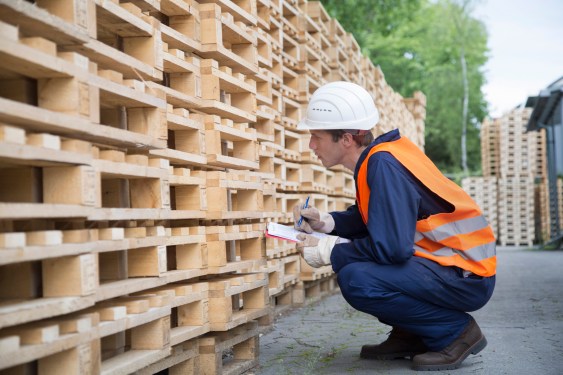Transportation and Warehousing: The Need for Modernization
The transportation and warehousing industries are massive, with trillions of dollars being spent on software systems known as transportation and warehouse management systems. Despite the scale of these industries, the technologies that power them are often outdated, inefficient, and siloed.
A New Approach to Transportation and Warehousing Management
Pallet is a company that is addressing this issue by developing an all-in-one transportation and warehouse management system that uses AI to help businesses streamline their operations from order entry to dispatching drivers, managing inventory, and accounting. Founded by Sushanth Raman and Andrew Spencer, both of whom have family in the logistics business, Pallet’s technology aims to modernize the way these industries operate.
The Problem with Manual Workflows
Raman explained that his team was inspired by meeting with various logistics businesses around the Bay Area, where they realized how much work was still being done manually. He noted that in some cases, half of an employee’s time is spent on back-office work and customer support. This manual approach to logistics not only leads to inefficiencies but also makes it difficult for companies to scale.
The Shift towards Digitization
While the transportation and warehousing industries are still largely manual, there is a growing trend towards digitization. Carrier scorecards, which evaluate carriers based on performance metrics such as response times, cost, compliance, etc., are becoming increasingly popular. This shift towards digitization means that companies now have a strong incentive to adopt more efficient technologies.
Pallet’s Solution
Pallet’s solution is an all-in-one transportation and warehouse management system that uses AI to automate many of the steps involved in logistics. The core idea behind Pallet is to provide a modern operating system for moving physical products from point A to B. This means using AI to eliminate manual data entry, automate workflows, and enable contactless orders.
Contactless Orders: The Future of Logistics
Raman envisions a future where orders are sent automatically, without the need for human intervention. He believes that Pallet’s technology can make this vision a reality by providing an efficient and automated system for managing logistics operations.
The Impact of Pallet on Transportation and Warehousing
Pallet’s solution has the potential to transform the way transportation and warehousing companies operate. By automating workflows, reducing manual data entry, and enabling contactless orders, Pallet can help businesses save time, reduce costs, and improve efficiency.
Funding and Future Plans
In a recent funding round, Pallet raised $50 million from investors such as Activant Capital, Cedar Capital, and angel investors like Zach Frankel. With this new funding, Pallet plans to expand its team and continue developing its technology.
Conclusion
The transportation and warehousing industries are ripe for modernization. Pallet’s all-in-one transportation and warehouse management system using AI is a step in the right direction towards making these industries more efficient and automated. As companies like Uber, Aurora, and others are investing heavily in logistics technology, it’s clear that there is a growing need for innovative solutions to address the challenges of managing logistics operations.
Related News
- Venture: What will this year bring in VC? We asked a few investors
- Startups: Inside the wild fall and last-minute revival of Bench, the VC-backed accounting startup that imploded over the holidays
- Fintech: These fintech companies are hiring in 2025 after a turbulent year











